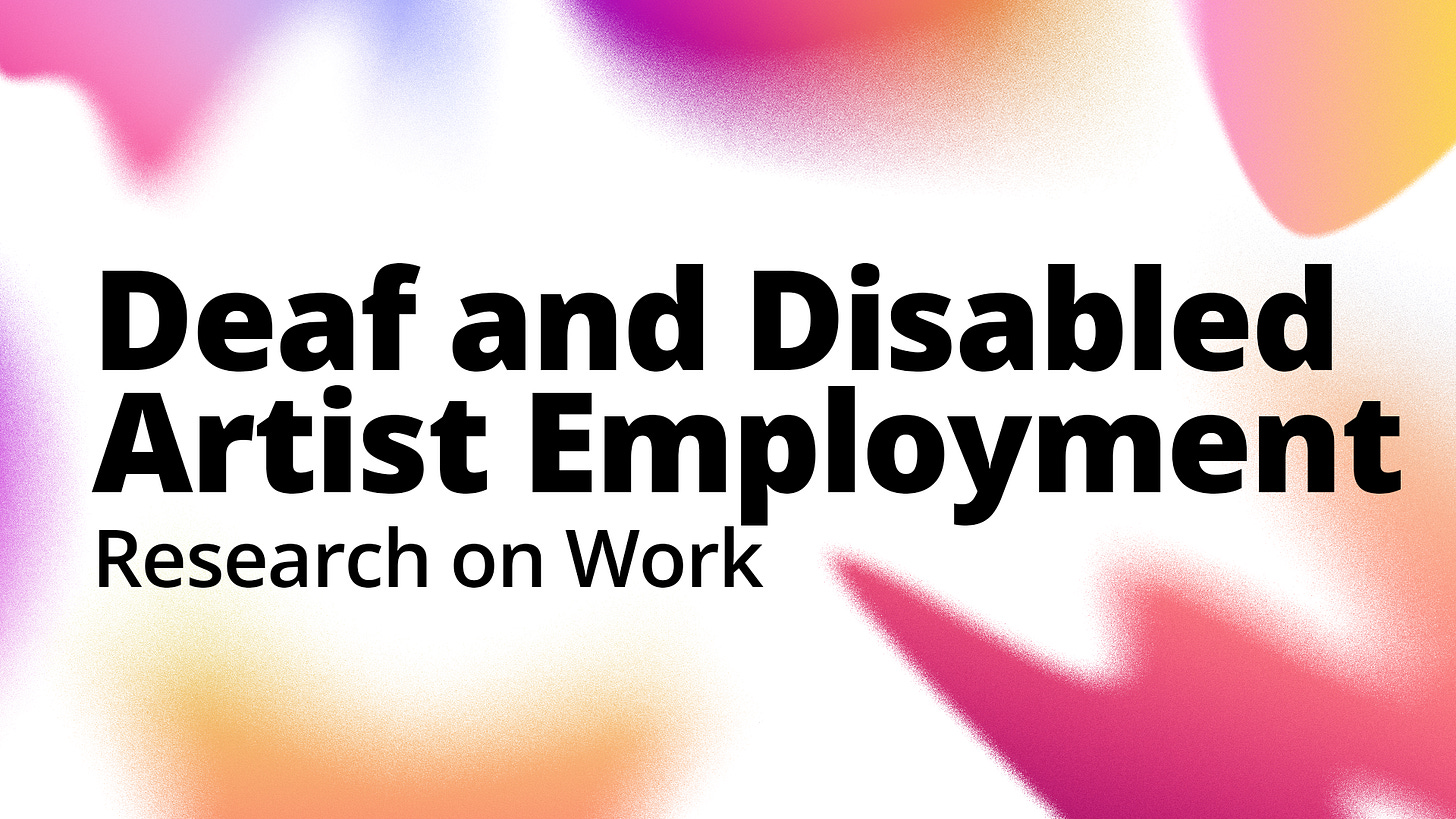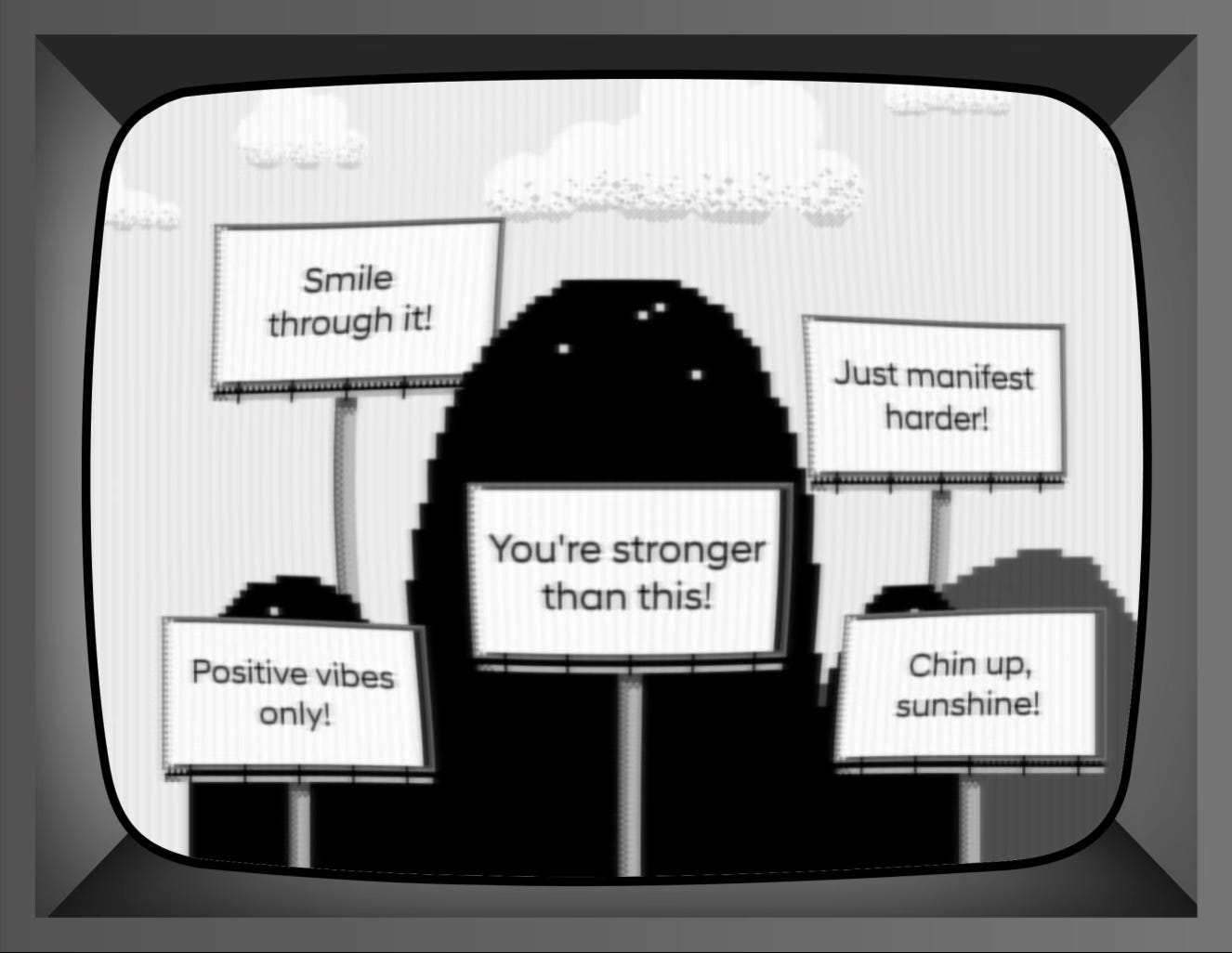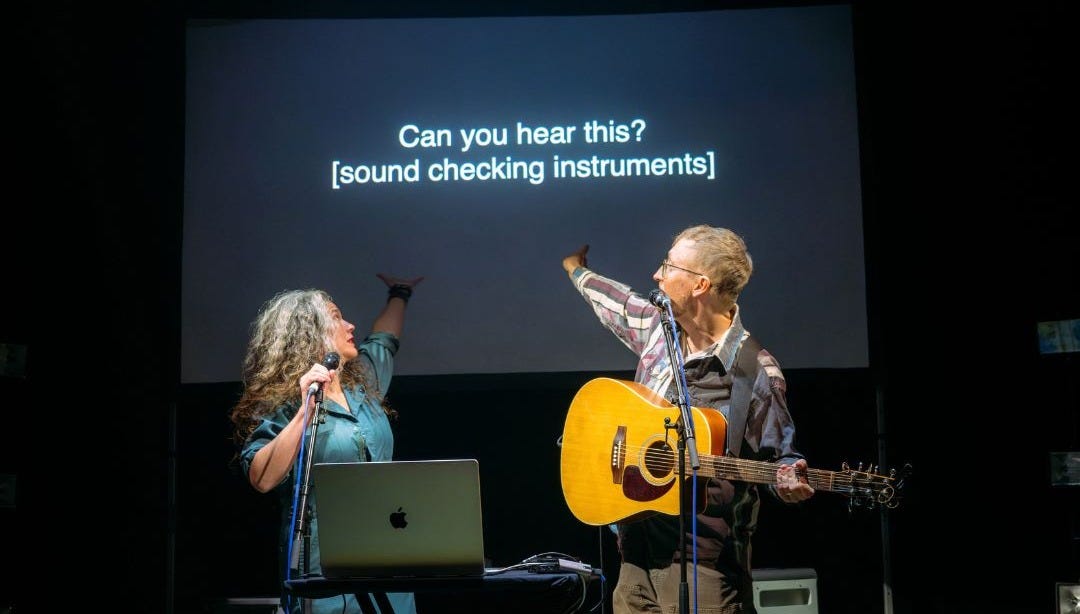Crip News v.203
A big picture on work for National Disability Employment Awareness Month, new works, other news, calls, and events.
NEWS
A Series on Disability & Work
Every October, the US Department of Labor launches a campaign called National Disability Employment Awareness Month (NDEAM). This year is its 80th anniversary.

As I wrote on the occasion last year, “Employment is…tricky, especially from a disability justice perspective that uses anti-capitalism as a central value.” I’ve found the trickiness deeply compelling and in fact focused some of my own employment on it. So I’ll be sharing some of what I’ve learned in a section on work, income, and disability in each issue this month.
Big Picture: Does Work…Work?
I’ve long cherished the principle of disability justice about “recognizing wholeness.”
People have inherent worth outside of commodity relations and capitalist notions of productivity. Each person is full of history and life experience.
It often feels to me like employment works against a person’s wholeness. So when I started working on an employment program in New York, I wanted to take some time to trace a bigger picture around work.
Here’s an excerpt from the report where I lay things out:
The physiological capacity to work has long been one way that social roles within the so-called social contract have been arbitrated on the level of the individual. Seemingly extrinsic and objective forms of evidence about a person’s body have been trusted to confer status about who should be considered an American, who can produce income, and who is ‘deserving’ of public aid.
But so-called scientific knowledge about a person and their environment has in fact been ideological cover for the power over land and life. Twinned processes of medicalization and dehumanization have afforded settler colonialist projects its deadliest weapons. Novel diagnoses for ways to live that challenge white supremacy have justified the displacement of Native peoples across Turtle Island, the legality of chattel slavery to build the settler nation, and the ongoing struggles to simply speak the truth of these histories.
The lasting legacy of this violence helps explain why the number of disabled people in the U.S. far outsizes the number of people who identify as disabled. (Organizer Mia Mingus has offered this as a distinction between being ‘descriptively disabled’ and ‘politically disabled.’) Claiming disability as an identity can create risk in the intimate spheres of people’s lives when ableism is a constitutive element of criminalization and mass incarceration, processes that also produce disability. In some cases, as with Deaf communities who identify with the cultural and linguistic formations around sign language, a generalized definition of ‘disability’ represents the very category that has been used to deny their basic rights to communication, mobility, and wellbeing for centuries.
[…]
[D]isability in the U.S. is both a cause and consequence of poverty. The safety net systems meant to help those who are persistently denied access to employment have trapped tens of millions of disabled people in poverty. Even the term ‘social safety net’ itself was introduced into U.S. public policy as a new intervention into the old political problem about disability in the distributive system: to identify the state’s bare minimum obligations to the so-called ‘truly needy.’ (See historian Guian McKee’s analysis of the term. See also Althea Erickson’s writing on the way the term ‘benefits’ has developed to weaken employer’s obligations to workers’ wellbeing.)
Thus, disability strongly influences how we understand social insurance writ large. Within this portrait of disability as a structuring analytic for the U.S. administrative state, we can understand some of the limitations to employment as a tool to address economic precarity.
In the next few weeks, I’ll explore some specific ways that work doesn’t work for everyone - and how placing too much emphasis on work is often part of the problem.
New Works
This week is the world premiere of Kinetic Light’s The Next TiMes at New York Live Arts (NYC). The “immersive multimedia disability arts experience” featuring Alice Sheppard, Laurel Lawson, Kayla Hamilton, and Tatiana Cholewa “imagines a near-future disabled universe — with an original score, otherworldly video projections, vivid multitrack audio description, and new haptics experiences (vibration).”
Hyundai Artlab recently commissioned artist Christine Sun Kim to make Up and Away, a “voice-controlled web game” that “upends the status quo of how speech should sound and whose words are heard.”
Minnesota Public Radio recently reported on the work of Indigenous interpreters and organizers working to indigenize ASL and expand culturally informed interpreting.
Ohio, an Edinburgh Fringe hit about tinnitus by Shaun and Abigail Bengson, is playing at Young Vic (London) through Oct. 24. An article in The Times figures the artists “at the vanguard of a new generation of artists whose disabilities are an ‘engine for innovation.’”
Last month, an international gathering in Kampot, Cambodia focused on disability arts and education for “social development.”
In Other News…
The Icelandic government has pledged ISK 60 million (about $500,000) over the next four years to support a new accessibility project called Ramping Up Ukraine.
A recent review of La Bohème at Opera Queensland (Australia) took aim at the company’s Auslan-interpreted performance. “Sign language. For the deaf. At the opera,” he wrote, drawing swift condemnation from disability arts leaders.
In Irvine, California, “urban service robots” are being deployed to inspect sidewalk accessibility.
Writer Kenny Fries recently announced Cyrée Jarelle Johnson as the inaugural winner of the Kenny Fries Disabled Writer Literary Award.
CALLS
The 2025 Disability Pride Parade taking place Sunday, Oct. 19 is open for registration, tabling, and volunteers.
Down to the Struts, a podcast about disability, design, and intersectionality, is hiring a Digital Media Manager.
EVENTS
Patty Taught Us: Dreaming Disability Justice Futures
Starting Oct. 23, 8 - 10pm ET, on Zoom
This Fall marks both an unprecedentedly challenging political moment and a time of continued mourning for Disability Justice communities in the wake of the transition of beloved leader and visionary, Patty Berne. To support our communities to make sense of this moment and to envision, and take collective action to build a better world, Health Justice Commons is offering a special Political Education Series, Patty Taught Us: Dreaming Disability Justice Futures.This series features an in-depth workshop and panel. You can attend both events or just one.
NYC Crip Open Mic
Sunday, Oct. 12, 6:15 - 8:30pm ET, on Zoom
Cripple Punk Mag, in collaboration with Culture Push, presents NYC Crip Open Mic. We know we’re out there. Now let’s get together. This is a live, online Zoom event for disabled musicians and music lovers in NYC. Come, share your music, and build local community online.DIScover Conference
Oct. 9 & 10, Native Earth’s Aki Studio (Toronto)
The Disability Collective is incredibly excited to invite you to the inaugural DIScover Conference, a two-day leadership event bringing together arts professionals, accessibility advocates, and community members to focus on advancing accessibility and disability inclusion in the arts. This is your opportunity to be a part of a ground-breaking event focused on accessibility in the arts. Explore workshop and panel topics like The Future of Audio Description, Preserving Indigenous Sign Languages, and Creative Accessibility.The Human Toll of Medicaid Cuts
Wednesday, Oct 8, 12:20 - 1:20pm ET, on Zoom
Join the Harvard Law School Project on Disability (HPOD), the Boston Center for Independent Living (BCIL), and Harvard Law School’s Disabled Law Students Association for an online panel event to take stock of the anticipated effects of recently enacted, unprecedented cuts to Medicaid and other critical federal assistance programs on persons with disabilities and their families. Panelists will outline the enormous human toll these changes are likely to take and ways to draw greater attention to them.







Looking forward to more on work. In job skills classes I taught at a rehab facility, I presented a unit titled “Your work is not equal to your worth.” My supervisor dismissed it as nonsense.